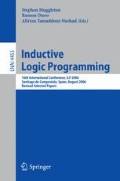Abstract
Machine learning research, e.g. as described in [4], has as its goal the discovery of relations among observations, i.e. appearances. This is inadequate for science, because there is a reality behind appearance, e.g. material objects are built up from atoms. Atoms are just as real as dogs, only harder to observe, and the atomic theory arose long before there was any idea of how big atoms were. This article discusses how atoms were discovered, as an example of discovering the reality behind appearance. We also present an example of the three-dimensional reality behind a two-dimensional appearance, and how that reality is inferred by people and might be inferred by computer programs. Unfortunately, it is necessary to discuss the philosophy of appearance and reality, because the mistaken philosophy of taking the world (or particular phenomena) as a structure of sense data has been harmful in artificial intelligence and machine learning research, just as behaviorism and logical positivism harmed psychology.
Access this chapter
Tax calculation will be finalised at checkout
Purchases are for personal use only
Preview
Unable to display preview. Download preview PDF.
References
Simon, H.A., Bradshaw, G.L., Zytkow, J.M., Langley, P.: Scientific Discovery: Computational Explorations of the Creative Processes. MIT Press, Cambridge (1987)
McCarthy, J.: Elaboration tolerance web only as (1999), http://www-formal.stanford.edu/jmc/elaboration.html
McCarthy, J.: Phenomenal data mining. Communications of the ACM (August 2000), http://www-formal.stanford.edu/jmc/phenomenal.html
Mitchell, T.: Machine Learning. McGraw-Hill, New York (1997)
Muggleton, S.H., Otero, R.: On McCarthy’s appearance and reality problem. In: Short Paper Proceedings of the 16th International Conference on Inductive Logic Programming, University of Corunna (2006)
Russell, B.: On the notion of cause. Proceedings of the Aristotelian Society 13, 1–26 (1913)
Spelke, E.: Initial knowledge: six suggestions. Cognition 50, 431–445 (1994)
Author information
Authors and Affiliations
Editor information
Rights and permissions
Copyright information
© 2007 Springer-Verlag Berlin Heidelberg
About this paper
Cite this paper
McCarthy, J. (2007). Challenges to Machine Learning: Relations Between Reality and Appearance. In: Muggleton, S., Otero, R., Tamaddoni-Nezhad, A. (eds) Inductive Logic Programming. ILP 2006. Lecture Notes in Computer Science(), vol 4455. Springer, Berlin, Heidelberg. https://doi.org/10.1007/978-3-540-73847-3_2
Download citation
DOI: https://doi.org/10.1007/978-3-540-73847-3_2
Publisher Name: Springer, Berlin, Heidelberg
Print ISBN: 978-3-540-73846-6
Online ISBN: 978-3-540-73847-3
eBook Packages: Computer ScienceComputer Science (R0)

